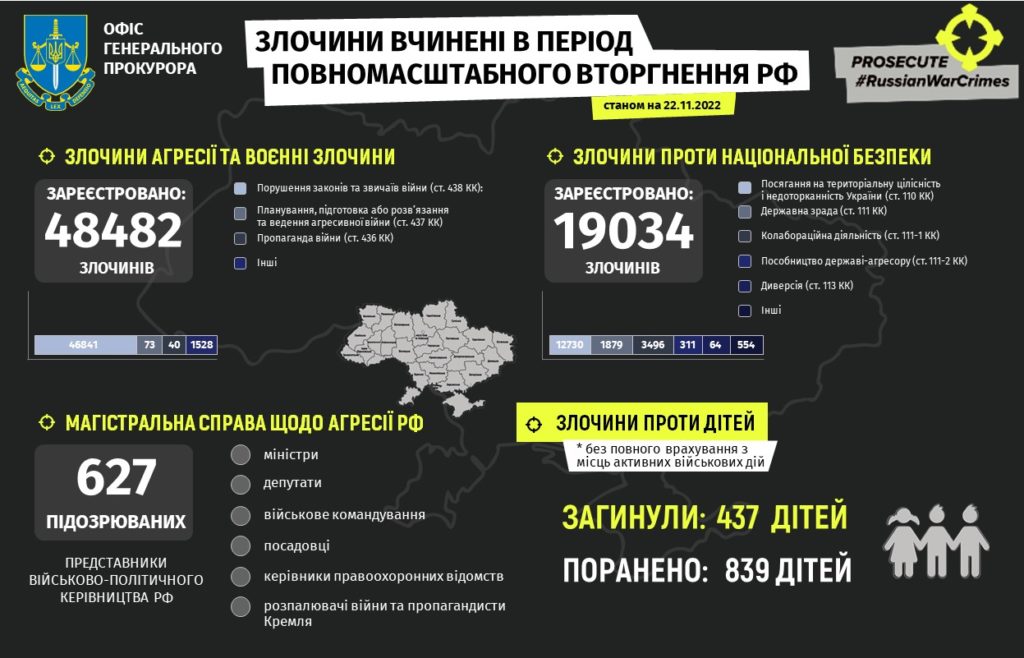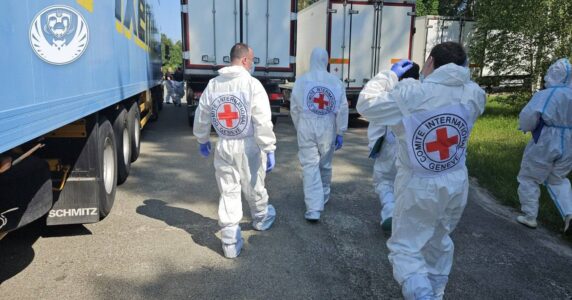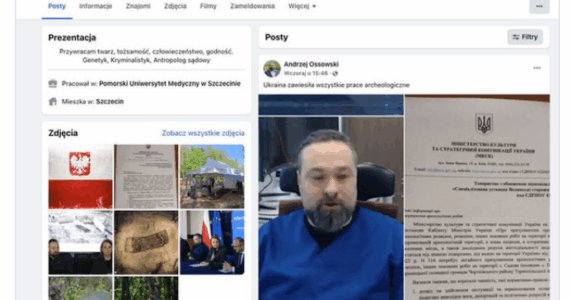Navigation and useful materials
The Russian propaganda machine stops at nothing to savour the details of the “atrocities of Ukrainian punishers,” regularly resorting to descriptions of the suffering of the “crucified boys” and the victims of the “Odesa Katyn.”
The first reports (false) of the Russian media about the massively killed in the “conflict in Ukraine” already appeared…on December 1, 2013. This was at the beginning of the Maidan, when there was confrontation on Bankova Street in Kyiv.
Since then, bloody plots, which were based on both manipulative “versions” of real events and outright fakes, have been used to hype up anti-Ukrainian hysteria within Russia and recruit those who want to take part in the war in Donbas. They also played a role in broadcasting the “Russian vision” of the conflict to an external audience. The Kremlin tried to convince the world of the “Nazi essence of the Kyiv regime,” to impose a narrative about Ukraine as a failed state.
The full-scale invasion, which began on February 24, has significantly complicated this task. After all, Ukraine has shown institutional resilience, and the international community has the opportunity to observe the war crimes of the Russian army live.
However, Telegram channel networks periodically mention the “war crimes” of the Ukrainian military, including “mass shootings of civilians” in the newly liberated cities. Often, propaganda allegations are completely peremptory, simply published or routinely voiced by news announcers. Sometimes, to give the appearance of truthfulness on camera, alleged eyewitnesses “testify,” or captured soldiers are forced to do so.
A separate place among the “evidence” is taken by videos with footage of torture and execution of Russian prisoners. The most resonant was the recording made, probably recently, in Luhansk Oblast. Although the video captured can be considered a clear example of outright perfidy (at least one of the Russians did not lay down his arms and opened fire on Ukrainians), it became widespread and was even “covered” by Western media.

READ ALSO: The Kremlin does not teach its military to behave properly when surrendering
This is not the only video of similar content that Russian Telegram channels spread. They target the Russian military to show that the Kremlin clearly does not welcome their surrender (a similar signal for morally unstable “Wagnerians” was the “Prigozhin sledgehammer”). But not just them. The publication of the videos can be considered part of an information operation aimed at forcing Ukraine to negotiate on Russian terms. The Kremlin is trying to use these videos to:
● switch attention from Russian war crimes against civilians and prisoners of war to “violation of the rules of war” by Ukrainians;
● divert attention from the fact that Russia unleashed the largest war in Europe since World War II, commits aggression against a sovereign state, and grossly violates international law;
● blur the line between the victim and the aggressor, portraying both sides of the armed conflict as cruel savages, whose crimes should terrify an average westerner;
● blackmail the world with the general brutalization of war, pushing to the conclusion that this massacre should be stopped faster and at any cost: even at the cost of Ukrainians losing their freedom.
Obviously, the Russians’ plan is to undermine public support for assistance to Ukraine in the EU and NATO countries. The Kremlin is doing this by trying to reach the emotions of the objects of information attacks. However, the facts speak for themselves:
- in the nine months of the full-scale war, the Russian troops committed an enormous number of war crimes: Ukrainian law enforcement officers have already registered almost 50,000 facts of criminal violations;
- Russia consistently covers up the crimes of its military and mercenaries and blocks investigations, particularly international ones. The most striking example is the Kremlin’s attempts to mislead the investigation into the MH17 case, the verdict in which was handed down by the District Court of The Hague a few days ago;
- instead, Ukraine is sincerely interested in cooperation with international institutions and does not hide anything from them. The staff of the Prosecutor’s Office of the International Criminal Court participate in the documentation of war crimes.

Along with blowing up the topic of “Ukrainian war crimes,” the Russians are trying to bring Ukraine to the negotiating table by other methods. The arsenal of the war criminals currently includes:
- missile terror against Ukrainian cities, destruction of critical infrastructure to leave the civilian population without power, heating and water supply in winter;
- thinly veiled threats to use weapons of mass destruction, in particular, nuclear weapons, in combination with nuclear blackmail at the captured Zaporizhzhia NPP;
- special information operations aimed at discrediting Ukraine, its military and political leadership, the army, special services and refugees abroad.
All this is combined with statements about readiness for negotiations “on their own terms” and “taking into account the realities that exist at the present moment.” Despite the fact that the Kremlin stubbornly does not name these conditions and does not clarify which realities are referred to, it is not difficult to guess: the Russians seek to gain a foothold in the occupied territories and gather forces for a new offensive. The only acceptable scenario for the end of the war for Russia is Ukraine’s capitulation. The Russians are trying to present Kyiv’s reluctance to engage in this as proof of Ukrainians’ inability to negotiate, and to shift the responsibility for the fact that the war is still going on to the victim of aggression.
But both Ukraine and its Western partners understand the dishonesty of Russia’s “peacebuilding initiatives” and Russia’s interest in an operational pause at best. Having achieved it, the Kremlin will begin preparations for a new stage of the war against Ukraine and will not stop terror against the civilian population.
Therefore, negotiations are impossible given the fact that:
- The Kremlin defiantly maintains its goal of destroying the Ukrainian state and Ukrainians as a nation;
- the actions of Russia, in particular, the desire to annex the occupied territories, are aimed at destroying the current world order and the system of international security;
- the Russian leadership speaks exclusively in the language of ultimatums and is intractable;
- strengthening of the Russian army during a pause in hostilities will lead to new victims and destruction;
- Russia is committing genocide against Ukrainians in the occupied territories. Murders of civilians, torture, rape, deportations of civilians and forced mobilization are just some of recorded war crimes committed by Russians. Only the expulsion of the occupiers can save people’s lives.
Therefore, Russian propaganda actively uses hyped-up content in an attempt to divert the attention of the international audience from the real goals of the Kremlin, and also tries to make the world disgusted with this war in general and all its participants just the same.
If you have found a spelling error, please, notify us by selecting that text and pressing Ctrl+Enter.


